Keywords
|
| IPV4,IPv6,Dual-Stack, Wireshark. |
INTRODUCTION
|
| Internet Protocol version 4 (IPv4) is the current Layer 3 protocol used on the Internet and most networks. IPv4 has survived for over 30 years and has been an integral part of the Internet evolution. It was originally described in RFC 760 (January 1980) and obsoleted by RFC 791 (September 1981).In the early years, even with the advent of the World Wide Web in the early 1990s, there were only about 16 million users on the Internet worldwide compared to over 2 billion by 2011 (reference: Internet World Statistics, www.internetworldstats.com). The actual number of devices increases dramatically when taking into account that today’s users usually have multiple Internet-enabled devices such as smart phones, tablets, and laptops.In the late 1970s, a family of experimental protocols was developed known as Internet Stream Protocol (ST) and later ST2. Originally defined in Internet Engineering Note IEN-119 (1979), it was later revised in RFC 1190 and RFC 1819.ST was an experimental resource reservation protocol intended to provide quality of service (QoS) for real-time multimedia applications such as video and voice. ST consisted of two protocols— ST (Internet Stream Protocol) and Stream Control Message Protocol (SCMP). Internet Stream Protocol version 2 (ST-II or ST2) was not designed as a replacement for IPv4. The idea was that a multimedia application would use both protocols—IPv4 for the transfer of traditional packets and ST-II for packets carrying real-time data.Although it was never recognized as IPv5, when encapsulated in IP, ST uses IP Protocol Number 5 (RFC 1700). In other words, although it was never implemented, the designation “IP version 5” was already taken. Today’s standard for resource reservation is the transport layer protocol Resource Reservation Protocol (RSVP), which can be used to provide receiver-initiated setup over IPv4. RSVP is described in RFC 2205. |
II. RELATED WORK
|
| In [1], the myriad defined IPv4/IPv6 co-existence technologies and discusses the salient features and advantages of each to help us to decide where a given technology choice makes the most sense. From a general perspective, the set of IPv4/IPv6 co-existence technologies can be organized into three categories: dual stack - implementation of both IPv4 and IPv6 protocols on network devices; tunneling - encapsulation of an IPv6 packet within an IPv4 packet for transmission over an IPv4 network or vice-versa; translation - IP header, address, and/or port translation such as that performed by host, gateway or network address translation (NAT) devices. The paper discusses the application support of IPv6. Finally it talks about some service providers' dual protocol strategies involving a combination of technologies from multiple categories. |
| Internet has experienced decades of rapid development, as the cornerstone of the entire network the IPv4 also has become very mature. However, due to its own limitations, it has been gradually exposed many shortcomings, so IPv6 designed by IETF as an alternative to IPv4. This paper put forward three major transition technologies: dual-stack (Dual Stack), tunnel (Tunnel), the address protocol conversion (NAT-PT) and the experimental model of the three technologies, which provide a useful reference for future IPv6 network design. [2] |
| IPv6 transition presents many challenges to the Internet community, and various solutions have been proposed, including dual stack, tunneling, and translation. Tunneling supports "like-to-like" IP connectivity across an "unlike" network, whereas translation supports "like-to-unlike" IP interconnectivity. No overarching strategy exists to address all possible scenarios. Because tunneling can keep the end-to-end model that the Internet is built on, the authors have developed a tunnel-based framework that solves the transition problems in backbone and access networks with different tunneling mechanisms. [3] |
| With the rapid development of Internet, IPv4 protocol can no longer meet the needs of users. This is mainly due to the limitations of IPv4 in terms of addresses, routing and security. Correspondingly, IPv6 has the advantage of large address space, security, mobility, quality of service and so on. So IPv6 protocol has become the inevitable trend of network development. However IPv4 and IPv6 are incompatible protocols, so a solution to transition is required. In order to achieve smooth and stepwise transition, IETF recommends three kinds of transition mechanisms: dual stack, tunneling and translation technology. This paper introduces the principle of these transition mechanisms, emphatically proposes a solution to smooth IPv6 transition based on tunneling and translation technology. Finally, they implement two kinds of tunnel and deploy a IVI transition system. The experiment results show that the proposed solution is feasible. [4] |
III. TRANSITION MECHANISMS
|
| The migration to IPv6 needs to happen. For at least the foreseeable future, IPv4 and IPv6 will coexist and there is no deadline or switchover date to go from IPv4 to IPv6. The transition is expected to take years. The Internet Engineering Task Force (IETF) has created various protocols, tools, and mechanisms to help network administrators migrate their networks to IPv6. These techniques can be divided into three categories: |
| A. Dual-Stack |
| A dual-stack device has complete support for both IPv4 and IPv6. It can be a host, printer, server, router, or any device that can be configured to support both protocols. In the IPv4 world, this includes IPv4 addresses, Address Resolution Protocol (ARP), and Internet Control Message Protocol (ICMP) for IPv4. An IPv4 router supports IPv4 static routes and IPv4 routing protocols such as Enhanced Interior Gateway Routing Protocol (EIGRP) and Open Shortest Path First version 2 (OSPFv2). In the IPv6 realm, support means more than just a network header with longer addresses. IPv6 support includes IPv6 global unicast and link-local addresses, ICMPv6 operations including Stateless Address Auto configuration (SLAAC), and Duplicate Address Detection (DAD). An IPv6 router needs to route IPv6 packets using static routes and IPv6 routing protocols such as EIGRP for IPv6 and OSPFv3. An IPv6 router sends out ICMPv6 Router Advertisement messages and can perform tunnelling or translation services.When communicating with an IPv4 device, it behaves like an IPv4-only device. When communicating with an IPv6 device, it acts like an IPv6-only device. In Step 1 of Figure.1, dual-stack host A sends a DNS query for the quad-A (AAAA) record for www.example.com. In Step 2, the DNS server returns a DNS query response containing both the quad-A and A records for www.example.com. Host A uses the quad-A record to begin communications with the www.example.com server. [5] |
| B. Transition |
| Another type of IPv4-to-IPv6 transition mechanism is tunneling. Like other transition methods, tunnelling should be considered a temporary solution until native IPv6 can be employed. A tunnel is nothing more than encapsulating one IP packet inside another. A tunnel can be an IPv4 packet encapsulated in another IPv4 packet or, for that matter, any network layer protocol over another network layer protocol. One of the challenges in integrating IPv6 into the current IPv4 networks is the ability to transport IPv6 packets over IPv4-only networks. One way to do this is to use a tunnel or, in IPv6, what is known as aTunneling is a technique that allows devices in isolated IPv6 networks to send IPv6 packets over the IPv4 network. [6] A tunnel has two types of protocols, a transport protocol and a passenger protocol. overlay tunnel. Overlay tunnels encapsulate IPv6 packets in IPv4 packets for delivery across an IPv4 infrastructure. |
| C. Translation |
| Network Address Translation (NAT) is a familiar method in IPv4, commonly used to translate between private (RFC 1918) addresses and public IPv4 address space. NAT64 transparently provides access between IPv6-only and IPv4- only networks. Address Family Translation (AFT) or simply translation, provides communications between IPv6-only and IPv4-only hosts and networks. AFT performs IP header and address translations between these two network layer protocols. [7] Like other transition methods, translation is not a long-term strategy and the ultimate goal should be native IPv6. However translation offers two major advantages over tunneling: |
| i. Translation provides a means for gradual and seamless migration to IPv6. |
| ii. Content providers can provide services transparently to IPv6 Internet users. |
| NAT64 is the replacement for NAT-PT, Network Address Translation – Protocol Translation, as documented in RFC 6144, Framework for IPv4/IPv6 Translation. Cisco recommends not using NAT-PT, supporting its replacement NAT64. NAT-PT has been included at the end of this chapter for reference and continuity. At the time of this writing, NAT-PT is still part of some Cisco curriculums, although it will eventually be phased out. At present, NAT-PT is more widely supported on Cisco platforms than NAT64. This will most likely change. [8] |
| NAT-PT has been deemed deprecated by IETF because of its tight coupling with Domain Name System (DNS) and general limitation in translation. These reasons are documented in RFC 4966, Reasons to Move the Network Address Translator - Protocol Translator (NAT-PT) to Historic Status. IETF proposed NAT64 as the successor to NAT-PT. |
IV. IMPLEMENTATION AND RESULTS
|
| The network diagram in Figure. 3 shows the Dual-Stack implemented topology, in which R1 and R2 are two Dual- Stack routers. The router R2 is configured only with IPv4 stack. |
| The Network addresses are also denoted near their respective networks. A Tunneling technique is needed when we are in need of connecting IPv6 Domains via IPv4 Clouds. 6to4 Tunneling is implemented in this network to achieve connectivity between the IPv6 networks. It is a point-to-multipoint tunnel. The destination IPv4 address of the tunnel is determined from the destination IPv6 address of the packet. 6to4 tunnels require a relationship between the IPv6 prefix or network address and IPv4 tunnel addresses. The IPv6 address is reverse engineered from the IPv4 tunnel address using the format 2002: tunnel-IPv4-address::/48. This allows a single tunnel to be created that has multiple destinations - a point-to-multipoint tunnel. |
| Wireshark captures and Results |
| We can see that the ICMP message contains both, IPv4 and IPv6 fields in its packet. The contents inside these fields are examined in the following figures 5 and 6. |
| The main contents to be noted in the IPv4 field are the Protocol Type and the Source and Destination addresses. The Protocol field in the IPv4 header tells the Network layer at the destination host, to which Protocol this packet belongs to. Protocol 41 represents the encapsulation of IPv6 packets inside the IPv4. [9] |
| The Ping is done to the host in 2001:DB8:0:3::/64 network from the host in 2001:DB8:0:1::/64 network. But we can see that the Source and Destination addresses captured by the Wireshark are the IPv4-only interfaces of the Routers R1 and R3, which are the two end-points of the 6to4 Tunnel |
| The analysis of the IPv6 fields are shown in the figure below. The main content to be noted in IPv6 is its Source and Destination addresses. |
| The Source and Destination addresses in IPv6 shows the actual end-to-end addresses of the communicating hosts. |
V. CONCLUSION
|
| Nowadays, lots of works and researches have been done on IPv6 and its related issues, and there is still a long way to go. IPv4 and IPv6 must coexist for some number of years, and their coexistence must be transparent to end users. If an IPv4-to-IPv6 transition is successful, end users should not even notice it. Dual stacking is the preferred solution in many scenarios. The dual-stacked device can interoperate equally with IPv4 devices, IPv6 devices, and other dualstacked devices. Tunnels can be created where there are IPv6 islands separated by an IPv4 ocean, which is the norm during these early stages of the transition to IPv6. |
| To experiment and understand the role which IPv6 will play in the future, it is necessary for us to develop hands on experience with the IPv6 technology. Through our effort in creating a Dual-Stack network using GNS3 have allowed us to develop expertise and become technically competent with IPv6 technology in an academic environment. It can increase our knowledge towards the IPv4 to IPv6 transition and migration. We have also been able to discover the basic of IPv6 technology and implementation of transition mechanisms. It also gave us the opportunity to test and understand the IPv6 technology before any real implementation time comes. This project could be applied to other organizational setting which intends to implement IPv6 in their network interconnection. |
| |
Figures at a glance
|
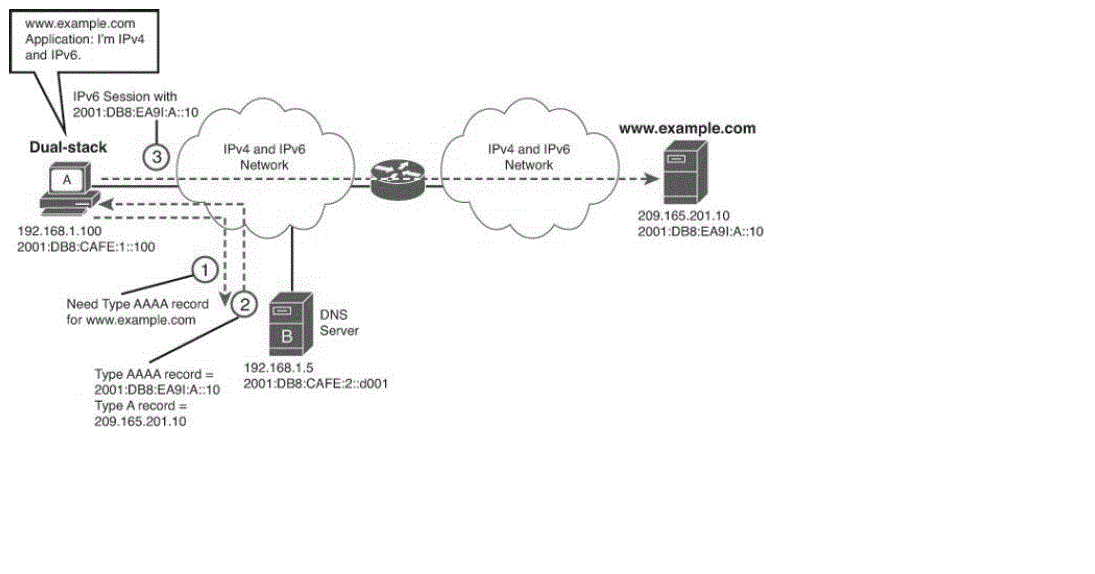 |
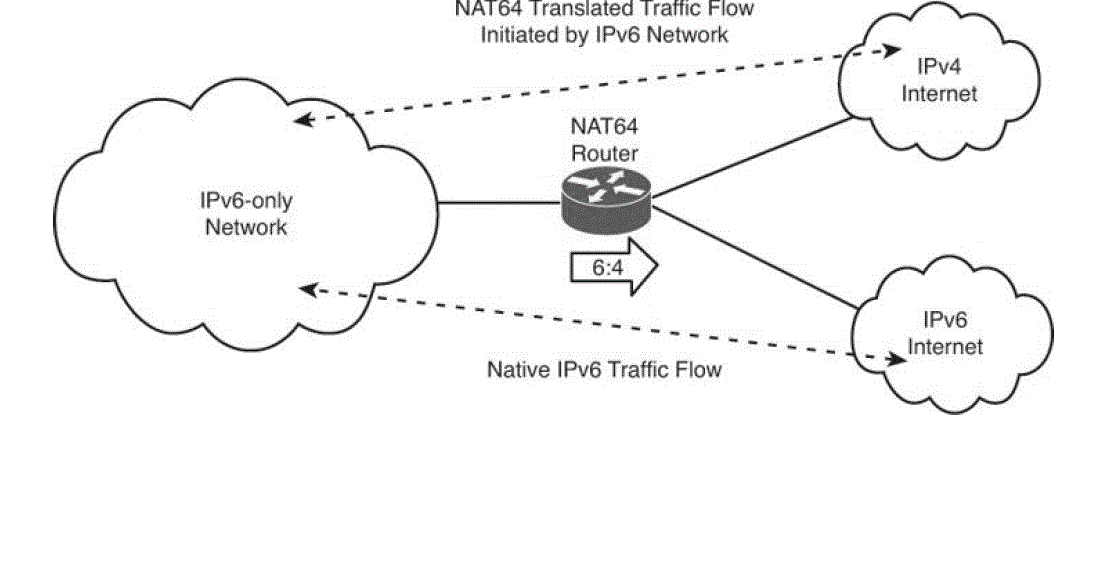 |
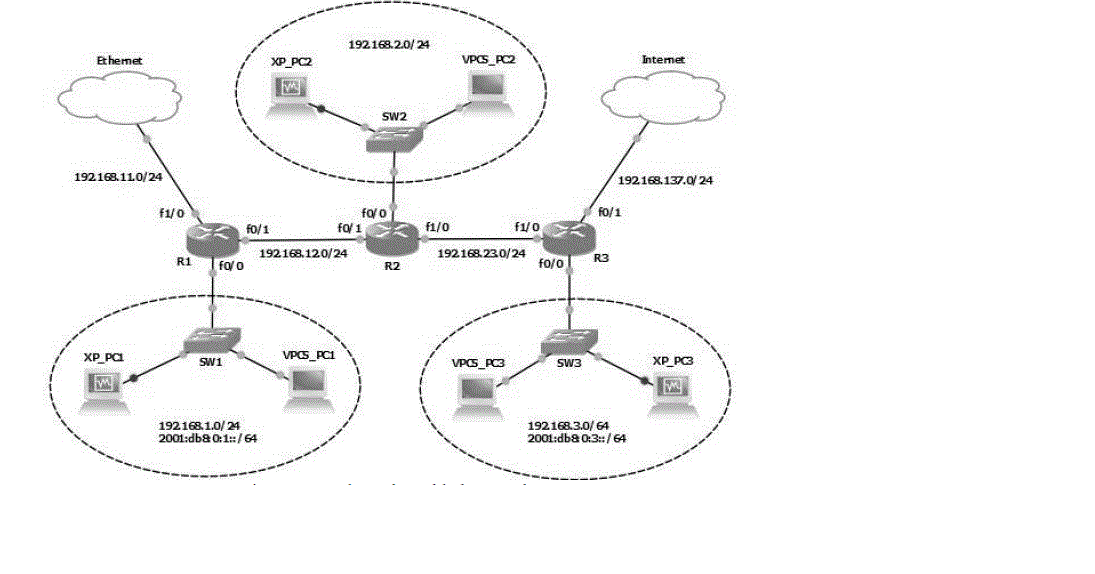 |
| Figure 1 |
Figure 2 |
Figure 3 |
|
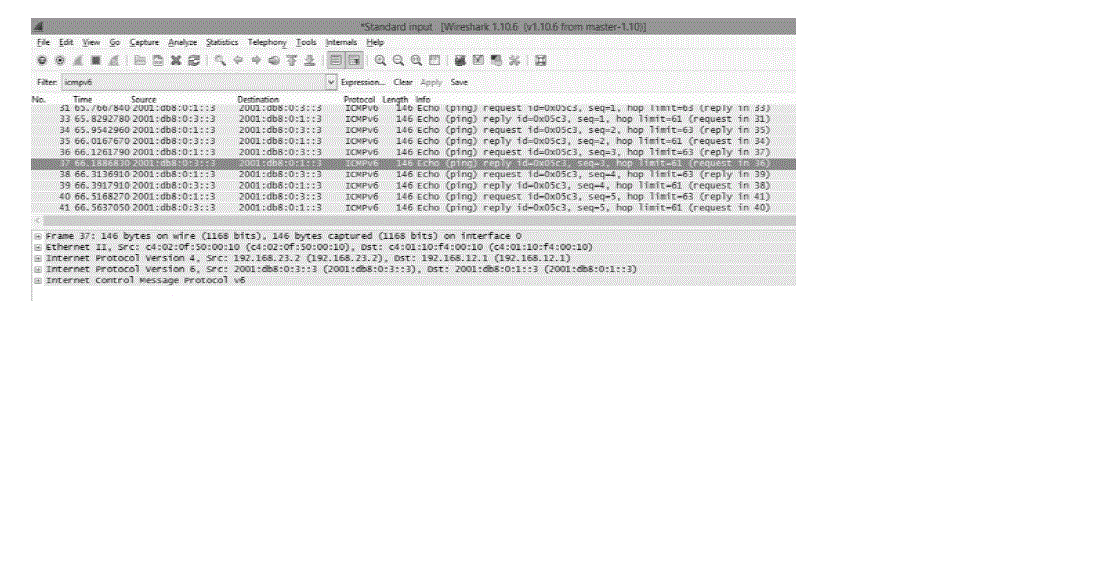 |
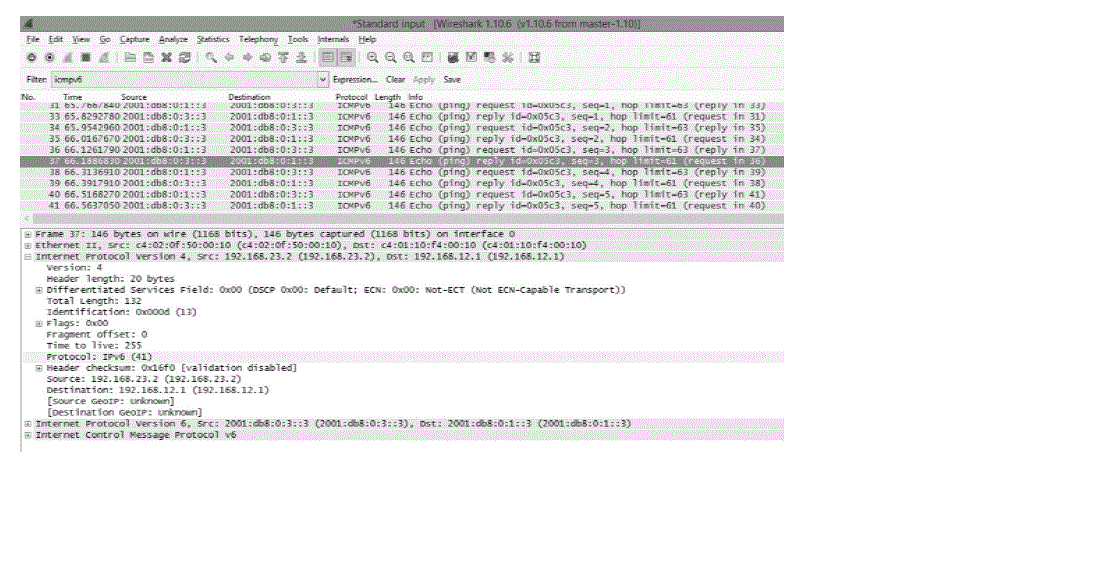 |
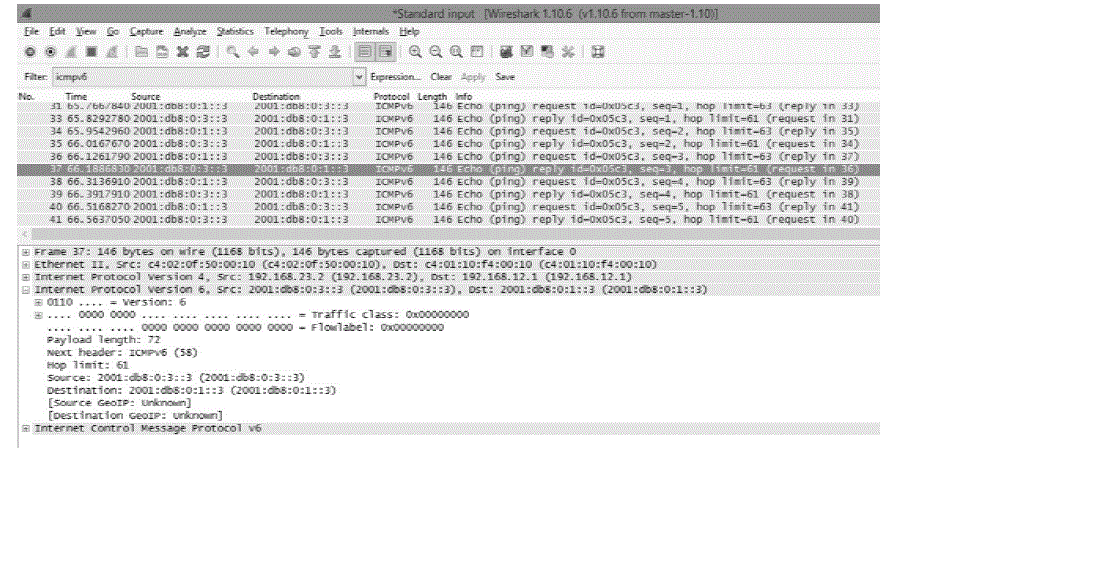 |
| Figure 4 |
Figure 5 |
Figure 6 |
|
| |
References
|
- Dooley, M. and Rooney, T. (2013) ‘IPv4/IPv6 Co-Existence Technologies’, IPv6 Deployment and Management, Wiley-IEEE Press, FirstEdition
- Li XiaoHong (2013) ‘The Research of Network Transitional Technology fromIPv4 to IPv6’, Digital Manufacturing and Automation (ICDMA),2013 Fourth International Conference, Qingdao, pp. 1507 – 1509
- Carpenter. B and Moore. K (2001) ‘Connection of IPv6 Domains via IPv4 Clouds’, IETF RFC: 3056
- Cui Yong, Dong Jiang, Wu Peng, Wu Jianping, Metz Chris, Lee Yiu L. and Durand Alain (2013) ‘Tunnel-Based IPv6 Transition’, InternetComputing, IEEE (Volume: 17, Issue: 2), pp. 62 – 68
- Chris Sanders (2011) ‘Practical Packet Analysis: Using Wireshark to Solve Real-World Network Problems’, No Starch Press, Second Edition
- Aazam, M., Syed, A.M., Shah, S.A.H., Khan, I. and Alam, M. (2011) ‘Evaluation of 6to4 and ISATAP on a test LAN’, Computers &Informatics (ISCI), 2011 IEEE Symposium, Kuala Lumpur, pp. 46 – 50
- Arkko. J and Baker. F (2011) ‘Guidelines for Using IPv6 Transition Mechanisms during IPv6 Deployment’, IETF RFC: 6180
- HepingHou, Qin Zhao and Yan Ma (2010) ‘Design and implementation of a solution to smooth IPv6 transition’, Advanced Intelligence andAwareness Internet (AIAI 2010), 2010 International Conference, Beijing, China, pp. 157 – 161
- Huitema. C (2001) ‘An Anycast Prefix for 6to4 Relay Routers’, IETF RFC: 3086
- Joseph Davies (2013), ‘Understanding IPv6’, Microsoft Press, Third Edition
- Chakraborty, K., Dutta, N. and Biradar, S.R. (2009) ‘Simulation of IPv4-to-IPv6 Dual Stack Transition Mechanism (DSTM) between IPv4hosts in integrated IPv6/IPv4 network’, Computers and Devices for Communication, 2009. CODEC 2009. 4th International Conference,Kolkata, pp. 1 – 4
- Rick Graziani (2013) ‘IPv6 Fundamentals: A Straightforward Approach to Understanding IPv6’, Cisco Press, First Edition
- Shirasaki. Y, Miyakawa. S, Yamasaki. T and Takenouchi. A (2005) ‘A Model of IPv6/IPv4 Dual Stack Internet Access Service’, IETF RFC:4241
|